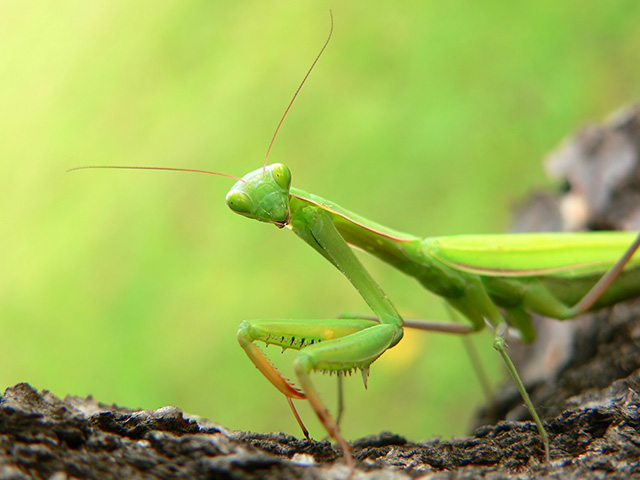Bugs for green thumbs: 7 Beneficial bugs that you need in your garden

(Natural News) The next time a person encounters a bug in his garden, he may want to rein in his reflexive response of crushing it like a, well, bug. Some of these critters fulfill beneficial roles such as delivering pollen to flowers and devouring actual pest species.
Start with the praying mantis, one of the biggest and meanest-looking insects in the garden. A spade-shaped head, globular eyes, and scythe-like forelegs make the mantis look like an insectoid serial killer that hacked and chewed its way out of a horror movie.
Science needs to rename the praying mantis to “preying mantis.” It devours aphids, beetles, caterpillars, and other bugs that harm plants. It uses its blade-like forelegs to snare and catch its prey, which it eats alive.
Likewise, even if the gardener’s name is Samwise Gamgee, he shouldn’t take his glowing trowel to slay the spiders in the garden. Unlike the descendants of Ungoliante (or Arachne for those who prefer Greek mythology), real-life Araneae do not eat people.
Instead, spiders weave their webs to catch insects, many of which harm plants and people. When they encounter humans, they prefer to flee. And on the rare occasion that they do bite people, the venom is usually not lethal. (Related: No direct sunlight? No problem! Here are 15 vegetables you can grow in the shade.)
These beneficial bugs devour harmful insects
Commonly known as the ladybug, the lady beetle (Hippodamia convergens) is a native species that goes after aphids, mites, and other soft-bodied bugs that plague the garden. Ladybugs eat both adult pests and the latter’s eggs. Gardeners go out of their way to buy large numbers of them to introduce to their gardens.
Unfortunately, its “evil” counterpart, the Asian lady beetle (Harmonia axyridis), is an invasive species that invade homes and “bites” humans. The easiest way to distinguish between the two similar-looking bugs is to check their head. The Asian ladybug has a black M-shaped mark on its head.
Farmers hate the tomato hornworm for the damage it inflicts upon valuable crops of eggplants, tomatoes, peppers, and potatoes. Understandably, they will adore certain species of braconid wasp, nature’s way of keeping the caterpillar of the five-spotted hawk moth under control.
These parasitoid wasps lay their eggs beneath the skin of the hornworm. Their larvae devour the caterpillar alive from the inside before gnawing their way out of their host, eventually killing it.
More aphid-eating bugs, bumblebees, and an honorary member
The adult green lacewing is a pollinator insect that eats nectar and pollen. Their babies, on the other hand, prey on soft-bodied bugs such as aphids, which suck sap from plants like vampires drinking blood.
A single lacewing larva may eat more than 200 aphids every week. After two to three weeks of devouring the pests, the larva spins a cocoon and develops into an adult insect. In turn, each female lacewing lays as many as 200 eggs, continuing the cycle of natural pest control.
Like the green lacewing, the appropriately named aphid midge sics its babies on soft-bodied bugs. Its bright orange larvae attack dozens of species of aphids.
In an aphid-eating contest, the aphid midge larva beats the green lacewing larva or the ladybug. The flies are often deployed as a natural means of pest control.
Last but not least is the bumblebee. Fuzzy and harmless to humans, bumblebees will pollinate plants that other native bee species or the European honeybee cannot or will not tend.
Earning an honorary place on this list is the humble earthworm. It may not be a bug, but it is the best at what it does, which is aerating the soil and producing fertilizer.
Sources include:


